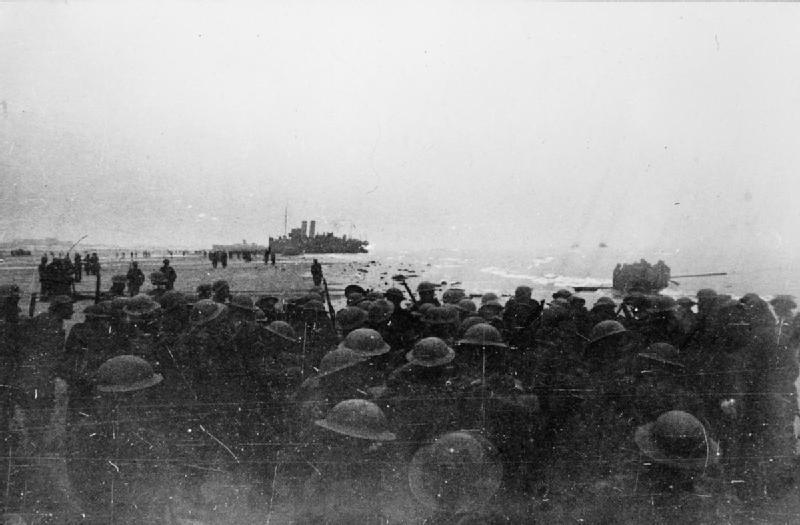Movie Review: Dunkirk

Director and writer Christopher Nolan has been widely praised for his work in Dunkirk, creating a terrific movie displaying a crucial point in World War II history. When people think of war movies, they expect explosions, gunfire and something good to happen whether or not it’s winning the battle or completing the objective. Dunkirk, however, brings a different perspective to war movies.
The movie’s storyline uses three different points of view to tell the story of what took place at Dunkirk, on the coast of France. Starting from the point of view of a group of soldiers, the soldiers are seen walking down an empty street. Flyers are seen falling from the sky, foretelling the German advance on Allied troops. The point of view switches to a lone solder from the group, who is the only one left after German troops kill off the rest of his group. This unnamed soldier retreats back into Allied lines, only to land up on the Dunkirk beach. At the beach, thousands of soldiers, supplies and boats are seen lined up on the beach ready to depart. From this scene on, you can tell that this movie won’t be about an attack, but about an evacuation. Later, from another perspective, we see a private boat owner, his son and a local boy unpacking their luxury boat. These charter boats played a crucial role in the Allied evacuation from Dunkirk because the Germans were sinking Allied medical boats and destroyers. The Allied situation was made worse because their resources were held up in preparation for an expected Axis invasion on the British homeland. Finally, the perspective switches to that of British Spitfire Planes flying toward Dunkirk in an attempt to provide cover for the troops evacuating the beach.
Each individual point of view tells its part in the main story, and moviegoers are invited to piece the story together like a puzzle. At the end, they won’t be disappointed, for the story as a whole is indeed a masterpiece.
There is very little dialogue throughout the film, but Nolan uses suspense, action, drama, cinematography and sound design to advance the plot and to build suspense. The film depicts the true story of the Dunkirk evacuation through amazing cinematography of the beach, the docks and from the air. In each scene, whether or not it was peaceful or intense, the use of surround sound grabs your attention. When the film cuts between the different points of views, viewers are kept in suspense as they piece together the storyline. When combined, these aspects of the film make for a suspenseful thriller, constantly providing one heart-pounding scene after another, and ultimately keeping moviegoers glued to the screen.
